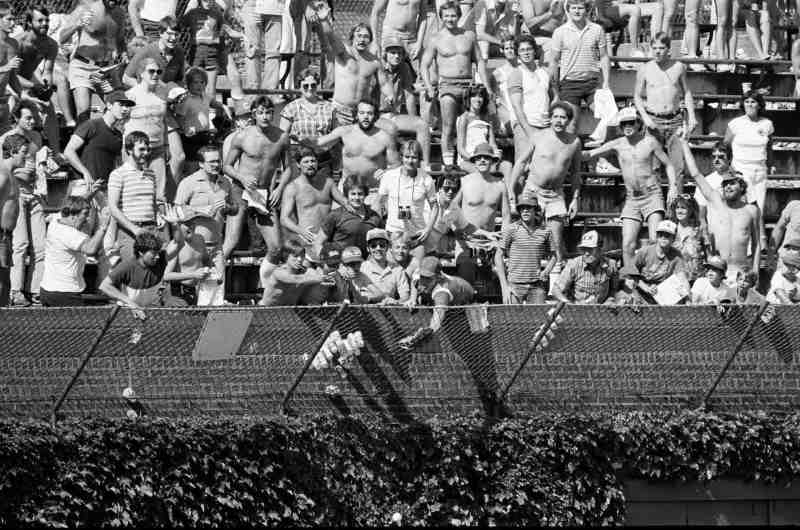
Changes to Wrigley Field in 1970 made it the “Friendly Confines” that Cub fans know and love to this day, as I note in my new book The Forgotten 1970 Chicago Cubs: Go and Glow, recently published by The History Press.
Although Cub broadcasters had been using the phrases “Friendly Confines” and “Beautiful Wrigley Field” for years, as changes in American society and the Vietnam War increased Americans’ anger at each other and people became rowdier, Wrigley Field was not exempt.
In the late 1960s, people started walking and dancing on the flat tops of the outfield walls and actually jumping on the field. In the last home game of the 1969 season, a woman ran onto the field and kissed New York Met third-baseman Wayne Garrett, the fans tossed a smoke bomb onto the field, a fan climbed up to the iconic centerfield scoreboard, and fans stomped on the roofs of both dugouts and stormed the field after the game was over.
Things got even worse during the first home stand of 1970, when bleacherites continually pelted the field with garbage, jumped on the field again after the opener, and fights broke out all over the park.
Wrigley Field was at a crossroads. Management of several of the older ballparks around both leagues often gave up and let the rowdies and drunks take over, but not the Wrigley family.
After the first homestand, the Cubs installed the wire “basket” in front of bleacher seats, not only to keep garbage off of the field but to keep the fans in their seats. The Cubs also cemented concrete triangles on the outfield walls so people could no longer walk and dance on them and use them as a jumping-off point for overrunning the field.
These were almost unheard-of midseason changes in a ballpark’s dimensions that Major League Baseball fully supported.
In addition, the Wrigley family supplanted the gentlemanly, coat-and-tie clad ushers with extra security. All those changes kept Wrigley Field safe and comfortable. Instead of sliding into chaos like a lot of the old ballparks of that era, the 1970 changes helped make Wrigley Field the iconic fun, fan-friendly, happening place it became in the 1980s and continues to be today.
The Forgotten 1970 Chicago Cubs: Go and Glow, published by The History Press of Charleston, SC, is available at https://tinyurl.com/1970ChicagoCubs.